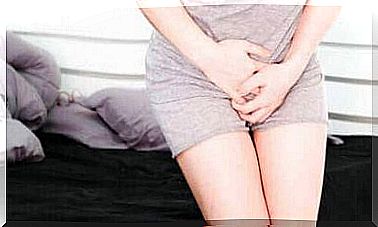What Is It Like To Live With Misophony?

Misophony is one of those conditions that remains invisible to almost everyone. Those who live with misophony live in absolute torture because of insignificant sounds that most others do not even notice. Some examples might be the sound of a person chewing gum, rain or the scraping of a pencil against paper.
What makes the situation even worse is that many health professionals ignore the complaints of those with this condition. They tend to classify these patients as insane, bipolar or schizophrenic.
Living with misophony is no small feat. Patients must not only cope with the suffering they experience in the face of constant intolerable stimuli, they must also face the general lack of understanding of the problem. Also, there is currently no treatment available for this selective hypersensitivity to sound.
What is misophony?
The term misophony simply means “sound hatred”. It refers to a disorder in which the individual expresses a disproportionate rejection of everyday sounds. It is defined as a pathological form of acoustic sensitivity.
When people with this disorder hear certain sounds, they experience irritation and a desire to howl or hit something. As common noise as the sound of breathing can produce feelings of anger, anxiety and panic.
Not all people with misophonia are sensitive to the same sounds. The most common triggers have to do with food – swallowing, slamming and chewing, etc. Annoying sounds such as the creaking of a chair or tapping of the fingers can also be triggers.

The causes and symptoms of misophonia
Misophony was first recognized as a medical problem in the 90’s. However, the scientific community has not yet accepted it as a disease. To date, few physicians are competent in diagnosing misophonia.
Everything seems to indicate that people are suffering from this disorder due to a neurological problem. According to available research, these individuals show abnormal activity in the anterior insula. Experts believe there is an anomaly in the treatment of emotions, derived from perception.
This problem is cataloged as a symptom more than a clinical condition in itself. It tends to occur in childhood, but there are also cases of misophonia that appear later in life. Apart from the extreme selective sound sensitivity and anxiety this causes, there are no other visible manifestations of this condition.
There are no specific tests to determine if a person suffers from misophonia or not. The diagnosis is rather a result of observing the individual’s reaction to different sounds. Although many may be disgusted by certain sounds, those living with misophonia show disproportionate reactions.
What is it like to live with misophony?

Misophony will completely change a person’s life. One of the first consequences is social isolation and loss of support within the family. Depending on the severity of the intolerance to everyday sounds, the patient may need to isolate themselves from others to avoid extreme discomfort and anxiety. This is especially true since the aversion almost always has to do with sounds another person makes.
The situation can be very tiring and prevents individuals from working from home as it exposes them to constant noise. The inability to eliminate sounds such as the keys on a keyboard or someone else’s breathing limits a person’s chances of social inclusion.
Those who live with misophonia can sometimes choose to wear headphones and listen to music all the time, since most people do not have problems with music. This allows them to distance themselves from the sounds of their surroundings. Similarly, individuals can wear earplugs, noise-canceling headphones or noise-canceling helmets.
Is there anything that can be done?
Currently, there is no treatment for misophonia. However, there are several studies on this topic.
In the meantime, the patient should work on developing adaptive behaviors. In other words, discover strategies that prevent the need for social isolation. Psychotherapy is especially recommended in these cases.
Relaxation and meditation techniques can also be helpful. They offer effective tools to overcome anxiety when it occurs. Regardless of the case, it is important that patients talk to their closest friends and family members so that they can become aware of the condition and gain a better understanding.









